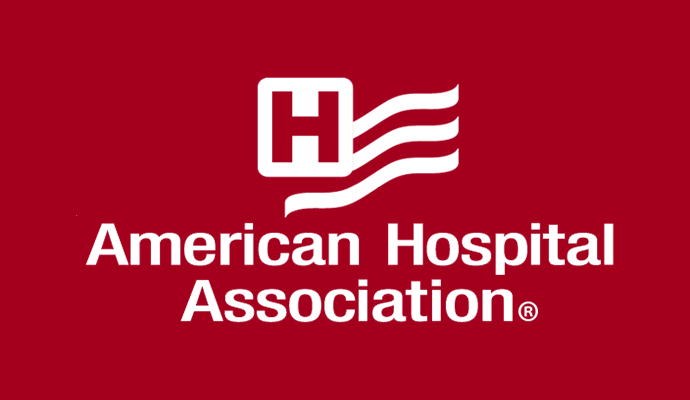AHA: Financial Challenges Continue as Hospital Expenses Rise
Hospital expenses increased by 17.5 percent between 2019 and 2022, and AHA expects this trend to continue in 2023 without congressional action.

Source: AHA Logo
- The rising costs of care are creating persistent financial challenges for hospitals and health systems, with hospital expenses growing faster than Medicare reimbursement over the last four years, according to a report from the American Hospital Association (AHA).
During the COVID-19 pandemic, hospitals and health systems have faced increased patient acuity, significant workforce shortages, and higher overall costs. Between 2019 and 2022, hospital expenses increased by 17.5 percent, while Medicare reimbursement only rose by 7.5 percent over the same time.
Hospital margins were consistently negative in 2022, with over half of hospitals ending the year operating at a financial loss. The trend of negative operating margins has continued in 2023.
COVID-19 surges in the beginning of 2022 led to increased patient demand, exacerbating hospital staffing shortages. In response, hospitals frequently turned to healthcare staffing agencies to fill workforce gaps.
Labor expenses typically account for around half of a hospital’s budget. These costs increased by 20.8 percent between 2019 and 2022, primarily due to the greater reliance on contract staffing agencies. Total contract labor expenses grew by 258 percent in 2022 relative to pre-pandemic levels, according to the data provided by Syntellis Performance Solutions.
Non-labor expenses have also increased by 16.6 percent on a per patient basis since 2019, the report found.
For the first time, the median price of a new drug exceeded $200,000, indicating a double-digit year-over-year price growth. Drug companies increased prices for 1,216 drugs by more than the rate of inflation, which was 8.5 percent between 2021 and 2022. The average price increase was 31.6 percent, with some drugs seeing price increases of up to 500 percent.
This drug price growth contributed to a 19.7 percent increase in drug expenses per patient between 2019 and 2022.
The demand for medical supplies and equipment has also led to rising expenses. Hospital supply expenses per patient rose 18.5 percent from 2019 to 2022, exceeding inflation growth by nearly 30 percent. Expenses for emergency services supplies, including ventilators, respirators, and other critical equipment, increased by almost 33 percent.
Higher patient acuity and longer hospital stays have increased the need for these supplies, AHA noted.
Purchased service expenses increased by 18 percent between 2019 and 2022. These are expenses hospitals incur to create operational efficiencies such as information technology (IT), environmental services and facilities, and food and nutrition services.
Laboratory service expenses per patient also grew 27.1 percent from 2019, while emergency service expenses per patient were up 31.9 percent.
As hospitals face expense increases, they are also experiencing burdens from health insurer policies, such as prior authorization requirements and improper claim denials. These tasks divert staff time from patient care, contribute to provider burnout, and increase administrative costs.
Administrative costs account for up to 31 percent of total healthcare spending, 82 percent of which can be attributed to billing and insurance processes. According to a separate AHA survey, 84 percent of hospitals said the cost of complying with insurer policies is increasing.
Additionally, three-fourths of nurses reported increases in insurer-required administrative tasks over the last five years and 90 percent said insurer administrative burden has negatively affected patient clinical outcomes.
These financial challenges for hospitals are expected to continue in 2023 without congressional action. AHA urged Congress to implement policies that support hospital workforces, reject efforts to cut Medicare or Medicaid payments to hospitals, and establish a temporary per diem payment to address the backlog in hospital patient discharges.
Editor's note: This article was updated on April 26, 2023, to note that the report data was provided by Syntellis Performance Solutions.
